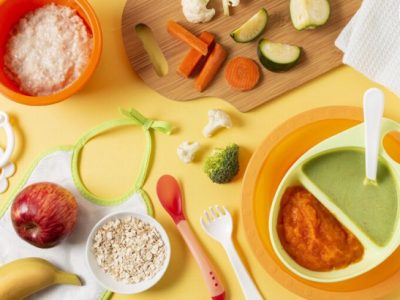
Not only humans but dogs are also accustomed to habits. This shared reality between you and your dog can work in both ways. If you create a habit of eating junk food, it’s hard for you to quickly shift to a healthy diet.
Similarly, for your dog, it’s difficult to deal with shifting from their usual diet to a healthy, natural one.
Before you do anything, you need to understand the whole scenario. As a pet owner, you need to understand the importance of nutrition for your dog. Their overall health and well-being depend on you!
So, you need to be more careful and responsible about it!
While many of your friends are opting for a more natural and vegan diet, nutrition should be your priority for the dog’s diet. You can help your dog thrive and live a longer, happier life by ditching processed kibble and introducing wholesome, nutrient-rich foods.
However, if your dog is not commonly habituated to a natural diet and is suffering from obesity, the diet transition is a must. But you need to follow a proper way to deal with this transition. If you think that you can do it within just two days, it can be a hard choice for your dog.
Why Transition To Natural Food?
It is no secret that kibble may have bad effects on your dog. While most of us rely on kibble these days due to the lack of time, it comes with nasty additives and preservatives.
Not only that, but Kibbles also uses ultra-processed ingredients to corner nutrition from your dog’s diet. Well, the companies do it to reduce the production cost, and as a result, your dog will never find the due nutrition.
So, it’s time to make the switch to natural and raw food like salmon bites for dogs. These bite-size nutrient-rich salmon can be the best food for your dog to lead an obesity-free, healthy life.
When it comes to natural food, some unbelievable benefits will be there. While the diet transition of your dog is in your hands, with raw and wholesome foods, you can watch the transition with your own eyes.
While allergies are common for dog skin, these natural diets can help banish yeasty build-up. A hydrated skin with sleek, shiny coats will be a common skin type for your dog after the transition happens.
However, anything good takes time to show up. A major diet change takes time to stabilize your dog’s health.
Tips For Transitioning Your Dog’s Diet
Transitioning your dog to a natural and healthier diet is a transformative journey that can have profound benefits for their overall health and well-being. As pet owners increasingly recognize the importance of nutrition in their dog’s life, many are seeking to replace processed commercial foods with wholesome, nutrient-rich alternatives.
However, making this transition requires careful planning, patience, and dedication.
In this article, we’ll explore a range of valuable tips and strategies to help you transition your dog to a natural and healthier diet with confidence and ease.
From gradual introductions and ingredient selection to monitoring your dog’s health and making adjustments along the way, these tips will empower you to provide your furry companion with the nourishment they need to thrive. Join us as we embark on this journey towards better nutrition and well-being for your beloved canine companion.
Do Your Research
Before making any changes to your dog’s diet, it’s essential to educate yourself about the principles of natural feeding and the specific nutritional needs of dogs. Research different types of natural diets, such as raw feeding, homemade meals, and commercially available natural dog food brands.
Consult with your veterinarian or a qualified canine nutritionist to ensure that you’re making informed choices that meet your dog’s unique dietary requirements.
Gradually Introduce New Foods
Abruptly switching your dog’s diet can lead to digestive upset and reluctance to eat. Instead, transition gradually by mixing small amounts of the new food with your dog’s current diet and gradually increasing the proportion of the new food over several days or weeks.
Monitor your dog’s stool consistency and overall well-being during the transition period, and adjust the pace as needed based on their response.
Choose High-Quality Ingredients
When selecting ingredients for your dog’s natural diet, prioritize whole foods that are fresh, minimally processed, and free from artificial additives, preservatives, and fillers.
Include a variety of protein sources, such as lean meats, poultry, fish, and eggs, along with healthy fats, carbohydrates, fruits, and vegetables to ensure a balanced and nutritious diet.
Aim to incorporate organic and locally sourced ingredients whenever possible to minimize exposure to pesticides and other harmful chemicals.
Monitor Your Dog’s Health
Pay close attention to your dog’s overall health and well-being after transitioning to a natural diet. Look for signs of improved energy levels, coat condition, skin health, and digestive function, as these are indicators of a successful transition.
Keep track of any changes in your dog’s appetite, weight, and behavior, and consult with your veterinarian if you have any concerns or questions about their health.
Make Adjustments As Needed
Every dog is unique, and what works for one may not necessarily work for another. Be prepared to make adjustments to your dog’s diet based on their individual preferences, sensitivities, and nutritional requirements.
Experiment with different ingredients, meal compositions, and feeding schedules until you find what works best for your furry companion. Remember that transitioning to a natural diet is a journey, and it may take time to find the perfect balance for your dog’s optimal health and happiness.
Conclusion
Transitioning your dog to a natural, healthier diet is a rewarding journey that can significantly improve their quality of life. The steps will take time, but if you follow these tips, the process will be smooth.
By following these steps and taking a thoughtful, gradual approach, you can help your dog thrive on a diet.
So, with patience, dedication, and a commitment to providing the best possible nutrition to the dog, you can sustain a happier life.
















